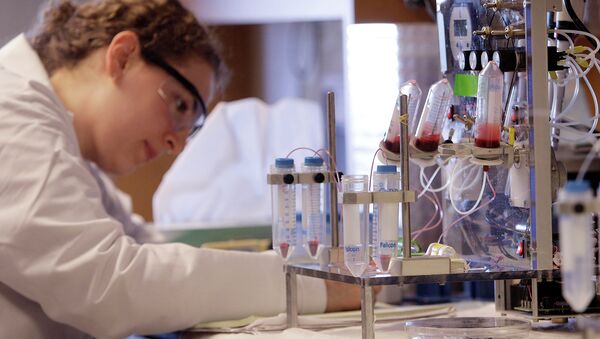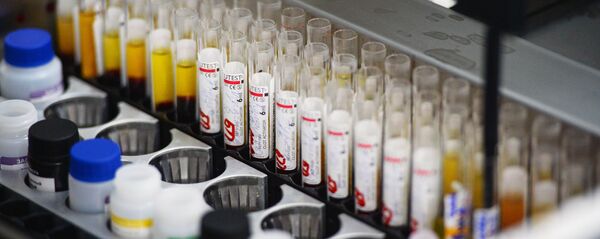She told Sputnik Brasil that the test can detect the virus after a week, which is much faster than conventional HIV testing.
"It all started with the development of cancer-detecting sensors. These sensors have been used for that purpose for several years, but we haven't stopped searching for new markers which would allow us to make faster clinical diagnoses," Kosaka explained.
"The timely detection of the HIV virus is one of the most pressing problems we face, and we decided to use our sensor to determine the presence of HIV."
Essa cientista BRASILEIRA, Priscila Monteiro Kosaka, 35 anos, criou sensor q descobre o câncer antes dele manifestar pic.twitter.com/vYTOePluib
— Silvio (@Silvio_MKT) 4 января 2016 г.
Priscila Kosaka pictured with her cancer sensor.
There are currently several tests which are used to check for HIV. The most common is the antibody screening test, which checks for HIV antibodies in blood or oral fluid. It can take three to 12 weeks for a person's body to make enough antibodies to be detected in the test.
The combined antibody/antigen test also checks for the p24 antigen, a structural protein that makes up most of the HIV viral core. It is produced and detectable before HIV antibodies.
This combination test can detect HIV between two and six weeks following infection, once the body has produced enough antigens and antibodies.
Kosaka said that the new test developed by her team is able to find the p24 antigen in lower concentrations than is required from the conventional combined antibody/antigen test, which enables it to detect HIV sooner.
"Traditional sensors need a very large concentration (of p24) in the blood, but because we had our own very sensitive sensor, we were able to find a minimal amount of this protein in the blood, thus shortening the 'window' of its detection to just one week," the scientist explained.
According to the UN, in 2015 there were 36.7 million people worldwide living with HIV. The number of AIDS-related deaths has decreased by 45 percent the last decade, from two million in 2005 to 1.1 million in 2015.
Never miss a story again — sign up to our Telegram channel and we'll keep you up to speed!



